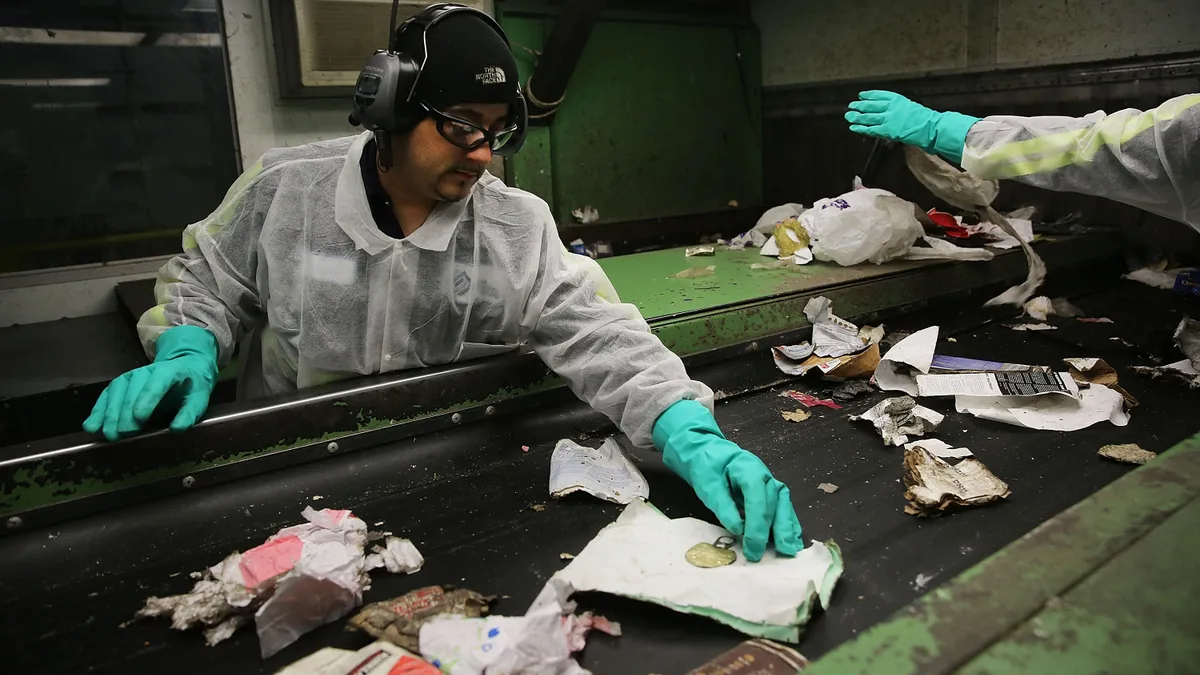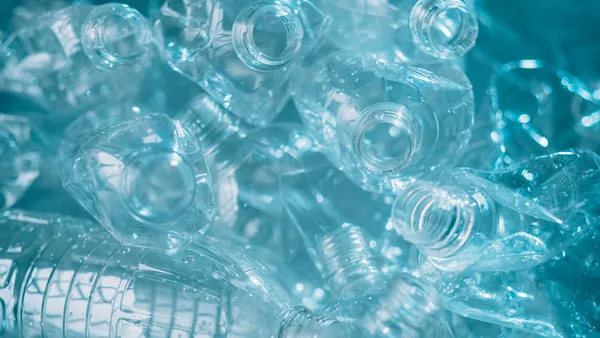Dive Brief:
- While it is too soon to know for sure, some industry associations have seen a slight stabilization in market prices due to rumors that China could begin issuing new import licenses as soon as November. This information was delivered by the Solid Waste Association of North America (SWANA) and National Waste & Recycling Association (NWRA) during the Environmental Protection Agency's first webinar on the Chinese scrap import situation.
- Even if markets do improve again in the near future, MRF operators shouldn't be expecting to see the new crackdown on contamination go away. Anne Germain, NWRA's director of waste and recycling technology, called that the "new normal," and said it would likely raise processing costs for service providers — which will in turn be passed on to customers via contract terms.
- This may also require local governments to invest more in recycling education. David Biderman, CEO of SWANA, said this could mean increasing education spending from the current $1 per person annual industry average. "If we're going to address the levels of contamination that we're seeing in single-stream in particular...I think the investment and it's not a cost, it's an investment, is going to have to be substantially higher," he said.
Dive Insight:
Keeping up on the multiple pieces and evolving details behind China's import policies can be difficult for even the most attuned industry players. This can be harder for state or local government officials that may already be stretched thin, but are also being asked for guidance from area service providers. Though based on the large attendance at this webinar, and a well-received session hosted by The Recycling Partnership last week, people are hungry for information.
So far the EPA has not been a primary source of that information, and is looking to industry associations for help both gathering and disseminating it. Now that the U.S. Trade Representative and Department of Commerce have raised the issue in trade talks with Beijing, and submitted questions to China's Ministry of Environmental Protection, all most can do is make the best of the current situation.
Pacific Northwest states such as Oregon and Washington have been receiving the most attention for how this is affecting their local programs, but multiple others are also seeing effects of the export restrictions. Zoe Heller, CalRecycle's assistant director for policy development, said that warehouse storage space for material had become a bigger factor in her state as markets tightened in recent weeks. Heller estimated that about 62% of the material diverted for recycling in California is currently exported to China, and the majority of that is paper. As a result, Heller recognized that California may need to explore new ways to achieve its future recycling targets if traditional options become less viable.
All of the speakers also emphasized the need to keep this in perspective. While it is true that China appears serious about this policy as part of the increasingly powerful President Xi Jinping's environmental agenda, the U.S. can also adapt. As noted by Biderman, even though market prices for many commodities are down, the lost revenues are often being compared to recent record highs, rather than historic averages. Germain also pointed out that export rates for both PET bottles and other non-rigid plastic bottles had declined significantly in recent years due to expanded domestic processing capacity. New markets in Southeast Asia are also growing. Transitioning to some hybrid of a system that is less reliant on China will be disruptive at least in the short-term, but it may also be the new normal.















